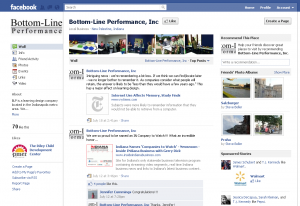(We have created an 8-part comprehensive report containing a series of two-to-three page “briefs.” This is part 2: Blending social and mobile. If you would like to see the collection in its entirety, click here.)
The term “social learning” – along with “informal learning” – has been bandied about for a couple years. Social learning is focused on the learning that people do by interacting with each other online – the informal exchanges that happen in social networking sites, blogs, online discussion groups, etc. In social learning, there is typically less of an expert to learner focus and more of a “let’s all learn together” focus. Its roots are NOT in mobile learning as social became a hit with the advent of social networking sites such as MySpace and Facebook – which emerged before mobile phones gave access to these sites.
The concepts of social learning and informal learning are intertwined with social tools such as Facebook, blogs, microblogs (e.g. Twitter), LinkedIn, etc. as well as tools such as wikis.
Though the term is now in its third year of mainstream usage, there are not a lot of great examples to look at in the corporate arena. At mLearn 2011, the keynoter who spoke on social learning came from advertising/public relations. Ninety-nine percent of her “social learning examples”were social marketing examples. So examples in action are a bit tough.
Proponents of social learning cite these benefits:
Social learning is democratic learning
Anyone can become a teacher. It’s easy to “crowdsource” responses to questions/issues by posting a question. The people who choose to respond dictate what information goes out to the crowd as opposed to an expert teacher dictating what content is made available. (Example: If I am a sales rep and I have a particular objection I’m hearing over and over again in my sales calls, a social network of my sales peers could be useful. I might post, “I’m getting X objection over and over. What responses have worked for you?” The responses my peers share could be better than the ones my boss – or the corporate marketing folks give me.)
Social learning is dynamic
Social sites let people post ideas, and then allow other people to add to or modify those ideas. (Think about recipes people post on sites such as AllRecipes.com – and the comments and recommendations for modifications that you’ll frequently see.)
Social learning is searchable
Tags make it easy to create searchable terms and phrases. This, in turn, makes it very easy for other people to find information and then augment that information. (Think Wikipedia.)
Social learning appeals to people’s inherently social nature
Mobile devices make it easier to be social in new ways. Mobile + social lets organizations leverage what people instinctively do. People PULL a tremendous amount of content from social sites; they use their phones extensively to gather information and to communicate socially.
Our Bottom-Line advice?
Pay attention to social learning and think about how social and mLearning might combine in your future. How might this look? What about a company YouTube channel (or multiple channels) where people can share “how to” videos that they create and upload via their phone’s camera? The “social” comes in allowing anyone to post – and anyone to comment. If you’re afraid of the “anyone can access our stuff” nature of YouTube or Facebook, consider behind-the firewall solutions. Microsoft has introduced a podcasting capability in its 2010 version of Sharepoint. Bloomfire is a social networking product specifically designed for corporate users.






Considerably, this post is really the sweetest on this notable topic. I harmonise with your conclusions and will thirstily look forward to your incoming updates.